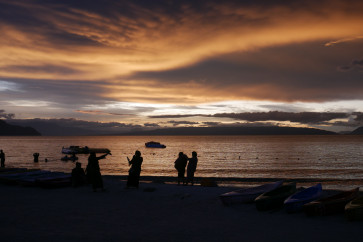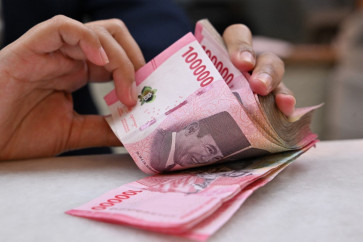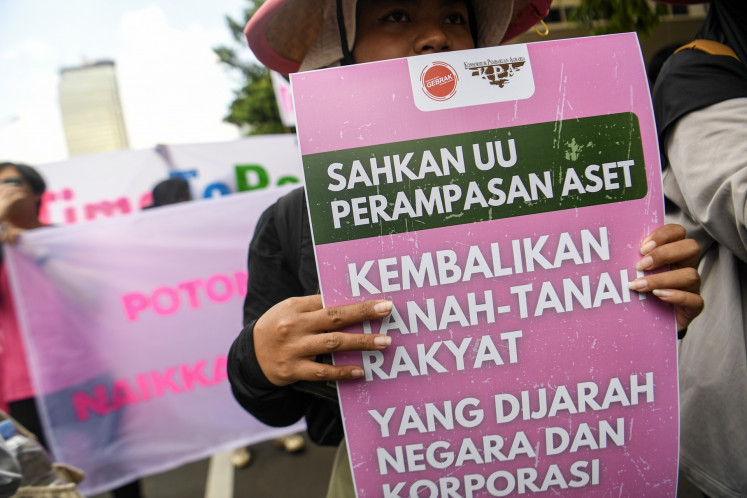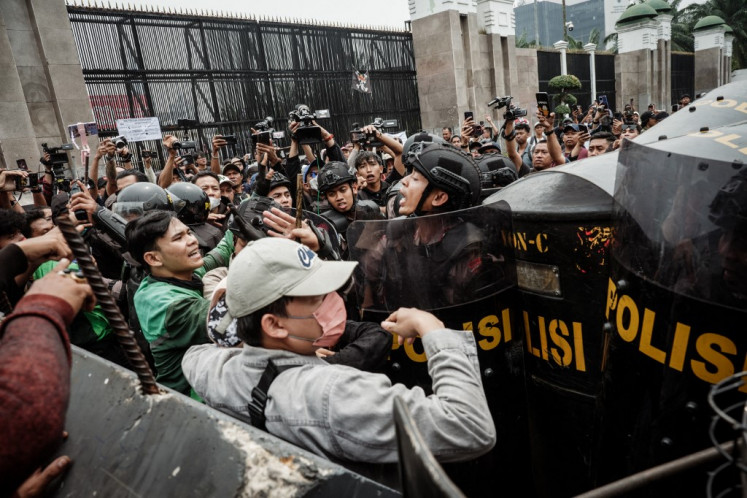Popular Reads
Top Results
Can't find what you're looking for?
View all search resultsPopular Reads
Top Results
Can't find what you're looking for?
View all search resultsJourneying through textile traditions
JP/Stevie EmiliaThe book’s title – Five Centuries of Indonesian Textiles – is enough to raise curiosity and make people pick it up and read
Change text size
Gift Premium Articles
to Anyone
JP/Stevie Emilia
The book’s title – Five Centuries of Indonesian Textiles – is enough to raise curiosity and make people pick it up and read.
Through its pages, the book takes readers on a colorful journey into the country’s rich textile-culture traditions.
The book serves as a window, opening up textile traditions rarely seen outside the museum because they are considered precious heirlooms, not something left out in the open for the public to appreciate.
With most books on Indonesian textiles mainly showcasing different fabrics from across the country, the author — a textile expert who is a collector herself — did not only manage to get her hands on rare fabrics of outstanding quality such as ceremonial garments, she also approached them from the perspective of both art and history.
This is not the first book by Mary Hunt Kahlenberg, who currently resides in Santa Fe, New Mexico where she and her husband Rob Coffland own TAI Gallery-Textile Arts. She has penned countless books, including Indonesian Textiles (with Richard Tuttle, 2004), Textile Traditions in Indonesia and Walk in Beauty: The Navajo and Their Blankets.
But rare Indonesian fabrics have stolen her heart from when she was a curator in charge of eastern hemisphere textiles at the Textile Museum in Washington DC, the place where she first fell in love with Indonesian textiles.
Karo Batak woman wearing an uwis teba fabric wrapped around her torso and a kelamkelam, dark indigo-dyed with no decoration on her head.Courtesy of Five Centuries of Indonesian Textiles
She also put together a major presentation of Indonesian textiles back in 1977, the first in the US, when she was head of the Costume and Textiles Department at the Los Angeles County Museum of Art.
And in her latest book, her passion shows right from the start. In her introduction, she provides memories on how she fell in love with Indonesian textiles and shared stories of her journey in search of the fine fabrics where she got in touch with different dealers and villagers — the people behind the exquisite objects — who showed her their precious and rare collections.
Kahlenberg’s personal touch brings life to the book, making it more than just a comprehensive record of the country’s rich textile traditions through historical and scientific facts as she also puts faces to the objects.
Her persistence led her to hundreds of exquisite rare fabrics, including those dating back as far as the 15th century. Kahlenberg’s book features more than 350 textiles along with around 300 detailed photographs and illustrations, and great and colorful design.
It shows attention to detail – even the paper used met the guidelines for permanence and durability to ensure the book’s longevity — and deep research. The book also includes essays written by reputable textile experts, who put weight and different perspectives into the book.
The book, now available in major bookstores like Periplus, highlights the incredibly layered textile culture and traditions across the country, from techniques to the powerful matrix of mystical connections of its common qualities.
Inside, readers are guided through different chapters, from the introduction to Indonesian textiles, past, present and future to fabrics from the country’s regions — Sumatra, Java, Bali, Borneo, Sulawesi, Nusa Tenggara and Maluku.
Along the way, readers can see rare fabrics — the exceptional beauty and sophistication of tapis, a tubular garment mainly worn by women in Lampung; or the richly patterned silk weft ikat textiles that were restricted to royal courts from Palembang (South Sumatra) or Riau Islands.
“Understanding and judging a textile is not really different from evaluating examples of any other artistic mediums. Textiles are more integrated into daily life, and perhaps, since they are hidden in plain sight, we are less able to clearly see all their unique attributes,” the author says in the book (p. 25).
“To me, this aspect of textiles resembles photography… we take pictures as records of our lives, but we rarely consider the pictures as art. So it is with textiles. We include them in every aspect of life, but we do not think of them as art.”











